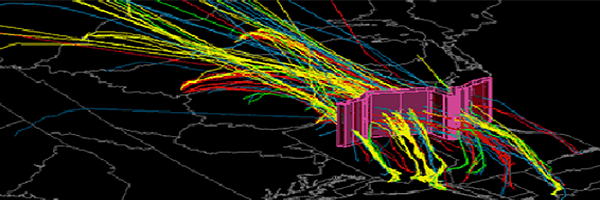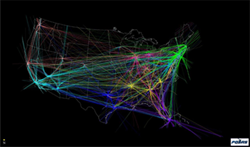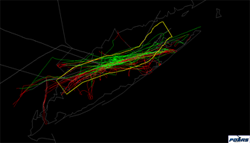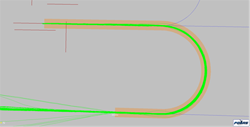
 The Performance Data Analysis and Reporting System (PDARS) is a FAA NAS System designed as an integrated performance measurement tool that facilitates operational analysis to improve the NAS. The system consists of a dedicated network of computers located at FAA sites that use specialized software for collecting detailed air traffic management system data.
The Performance Data Analysis and Reporting System (PDARS) is a FAA NAS System designed as an integrated performance measurement tool that facilitates operational analysis to improve the NAS. The system consists of a dedicated network of computers located at FAA sites that use specialized software for collecting detailed air traffic management system data.
 The PDARS system includes 20 domestic Air Route Traffic Control Centers (ARTCC's), 28 Terminal Radar Approach Control (TRACON) facilities, 27 ASDE-X equipped airports. PDARS is also used at FAA Service Area Offices, the Air Traffic Control System Command Center, the Mike Monroney Aeronautical Center, and FAA Headquarters.
The PDARS system includes 20 domestic Air Route Traffic Control Centers (ARTCC's), 28 Terminal Radar Approach Control (TRACON) facilities, 27 ASDE-X equipped airports. PDARS is also used at FAA Service Area Offices, the Air Traffic Control System Command Center, the Mike Monroney Aeronautical Center, and FAA Headquarters.
As a NAS system, the data contained in the PDARS system is intended for government use only. The PDARs data differs from other NAS data in that it is enhanced to provide quality controlled flight track data.

Key Features of PDARS
The addition of event information to the flight track data provides data that can be readily analyzed and support metric and reporting needs. It is the FAA’s only mechanism to provide Gate to Gate analysis. FAA personnel use the PDARS system extensively to assist in monitoring, measuring, analyzing, and managing operations on a day-to-day basis.



Visualization and Animation: Displays multi-dimensional viewing of flight activity and airspace, animation replays of historical data using 3D and 4D visualization for operational analysis, and flightdata filtering
Last updated:
